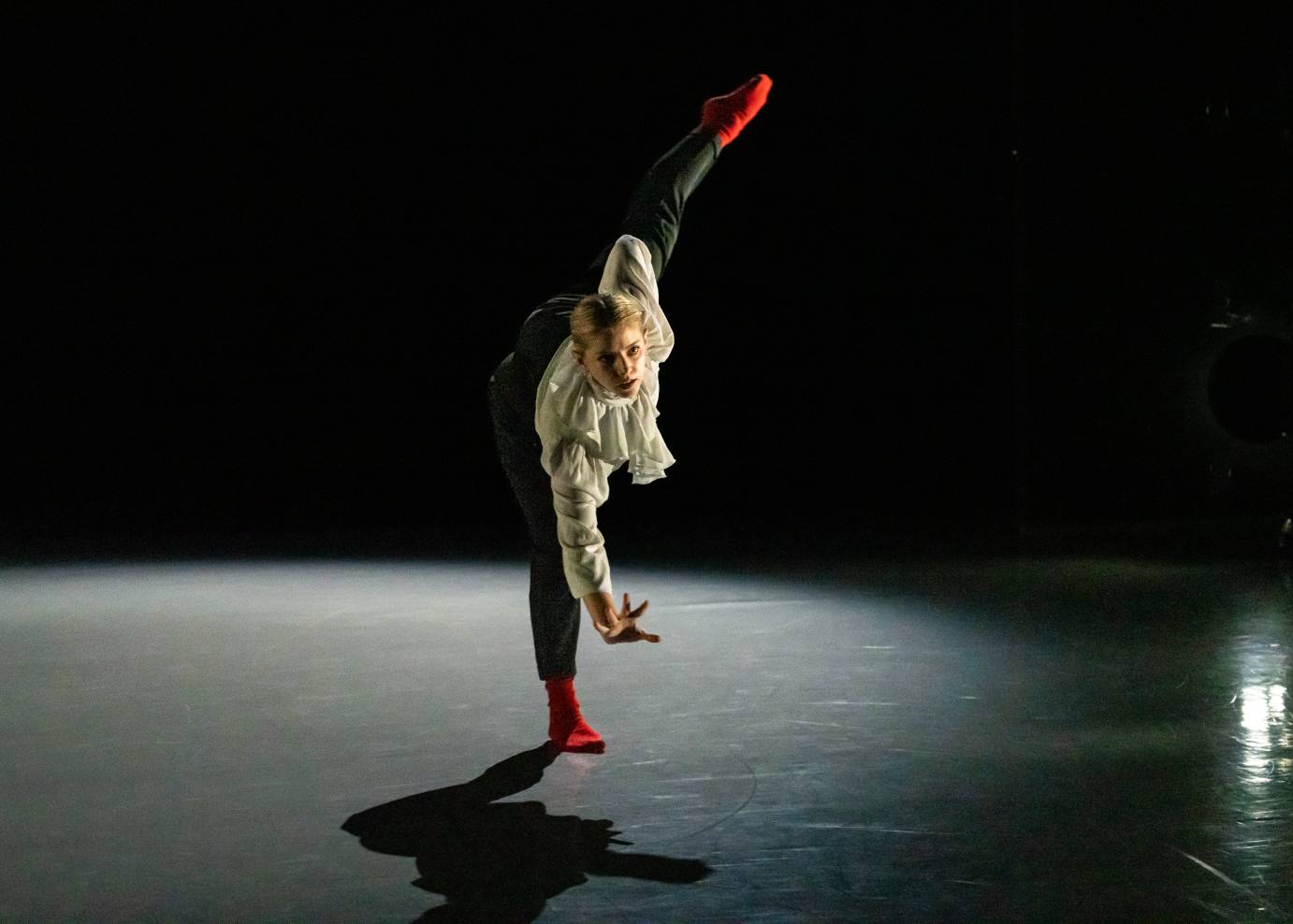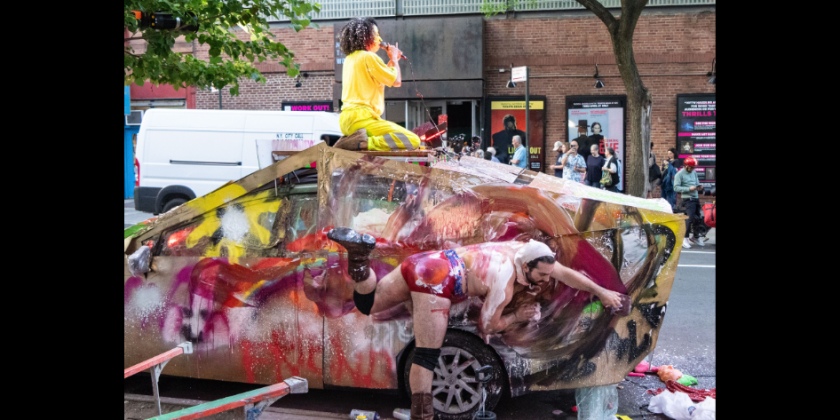IMPRESSIONS: "Here Now" Presented by LaneCoArts and Abarukas at Peridance Capezio Center

The Parable: Innocent and Corruption
Choreography: Yoshito Sakuraba
Dancers: Aurielle Sepulveda, Faith Shover, Justin Rainey, Julia Asher, Kampbell Featherstone, Manuela Motoya, Nelson Mejia
Music: Saunder Jurriaans, Danny Bensi, Bob Dylan
No Telling What
Choreography: Lane Gifford, in collaboration with the dancers
Part I Musical Contributions: Johnny Butler // Part II Composer: Yin Han Zoe Yang
“On the Sunny Side of the Street” performed by Rickie Lee Jones
Photographer and Process Collaborator: Betsy Weis
Process Collaborators: Susan Rodriguez, Susan Hereth
Dancers: Emily Aslin, Nina Chong-Jimenez, Jonathan Colafrancesco, Richard Sayama, Annie White
Lighting Operator & Lighting Designer : Zack Saunders
Theater & Stage Manager: Richard Scandola
Sound Operator: Aleksandra Strekalova
Dates: November 23 - 24, 2024
Venue: KnJ Theater at Peridance Capezio Center
In Here Now, Abarukas and LaneCoArts present two gripping dance works that probe the complexities of societal influence. Both pieces offer emphatic takes on this theme, challenging us to consider our relationship to those around us and to our planet.
The program opens with Yoshito Sakuraba’s twenty-minute work The Parable: Innocent and Corruption. Inspired by the play The Pillowman, the dancers depict the “moral ambiguities and psychological depths of human nature, reflecting on how innocence can be manipulated and corrupted by societal and personal influence.”

We see this idea from the get-go as the cast of seven plays with themes of control. Two dancers representing innocence (Faith Shover and Nelson Mejia) receive physical manipulation from their companions, their limbs and heads redirected into submissive, contorted shapes. We feel their longing to break away from society’s grasp, particularly in their tender duet and when Shover, surrounded and restrained by the group, bares her open mouth, silently screaming.

Throughout the work, the atmosphere remains tense and dark. In the sound score, we hear recurring motifs of stalking footsteps (which Julia Asher commands, stepping to their sounds with a dominating presence), sharpening knives, and booming crashes. As the piece morphs into varying solos, duets, and group sections, the cast plays with themes of power dynamics through physical manipulation and partnering. Each Abarukas dancer demonstrates superb technical command in their featured sections, and sweeping partnering and group lifts occur spontaneously with satisfying transitions.

The dance’s narrative echoes the themes of the play it pulls inspiration from, as Shover and Mejia navigate and attempt to escape from the tensions in their society. After a sunny unison section that unites the cast to the music of Bob Dylan, The Parable: Innocent and Corruption closes with a return to its ominous ambiance. The effect is haunting, yet not without hope that the protagonists will continuously fight for their beliefs and their individuality.
Lane Gifford’s No Telling What, an evening-length treasure, fuses movement, music, text, fabric, and visual art to delve into our attitudes and actions towards Mother Nature. Performed by a stellar cast of five, the dance “explores the meaning of ‘sustainability’ and whether a balance between economic growth, environmental care, and social well-being is possible today.”

The idea of “care” certainly stands out as the takeaway word after viewing this piece. The cast’s supple, organic dancing demonstrates sincere concern toward one another and the work’s ecological subject matter. They achieve this through their attentiveness while dancing together, and most pointedly through observation, as the cast often remains on stage to witness solos. To echo a quote projected before the dance: “In nature, nothing exists alone.”
This sincerity undoubtedly stems from the dancers’ lived experience in building No Telling What. During its creation, LaneCoArts traveled upstate to The Natural Areas Conservancy (Here Now’s partner organization), where nature photographer Betsy Weis captured images of the dancers in the landscape. Animated projections of Weis’ work — trees, leaves and water — overlay the dancers’ silhouetted movements throughout the piece, creating an immersive, tranquil experience.

While No Telling What cascades between individual and group moments, a clear character distinction emerges between Nina Chong-Jimenez, who represents Mother Nature, and four dancers who represent Society. The work begins and ends with Chong-Jimenez dancing alone, setting the stage for the work’s tender, articulate qualities. Emily Aslin, Jonathan Colafrancesco, Richard Sayama, and Annie White too offer their sincerity in movement and connection as they partner Mother Nature and one another.
Memorable images occur as White and Chong-Jimenez travel across the stage confined in sheer, stretchy fabrics pulled by their castmates. With their bodies enveloped in the fabric’s grasp, their steps evoke a sense of struggle, as if wading through molasses.

Throughout, we hear the dancers speak aloud in spurts of their mother tongues (English, Spanish, Japanese, and Italian), their overlapping speech insinuating commotion and chaos. These moments stand apart from the serene qualities of Weis’ photographs projected behind them. These qualitative contrasts and the dynamics between the dancers draw out the tensions of social and ecological relationships.

The two dances presented in Here Now offer multiple perspectives on how we fall into social patterns, specifically in regards to interpersonal power relations and environmentalism. Both works remind us to listen to each other, our moral conscience, and our planet.












